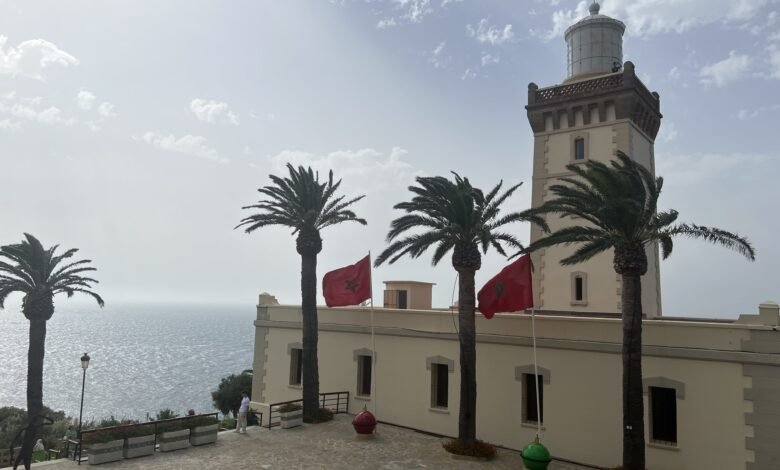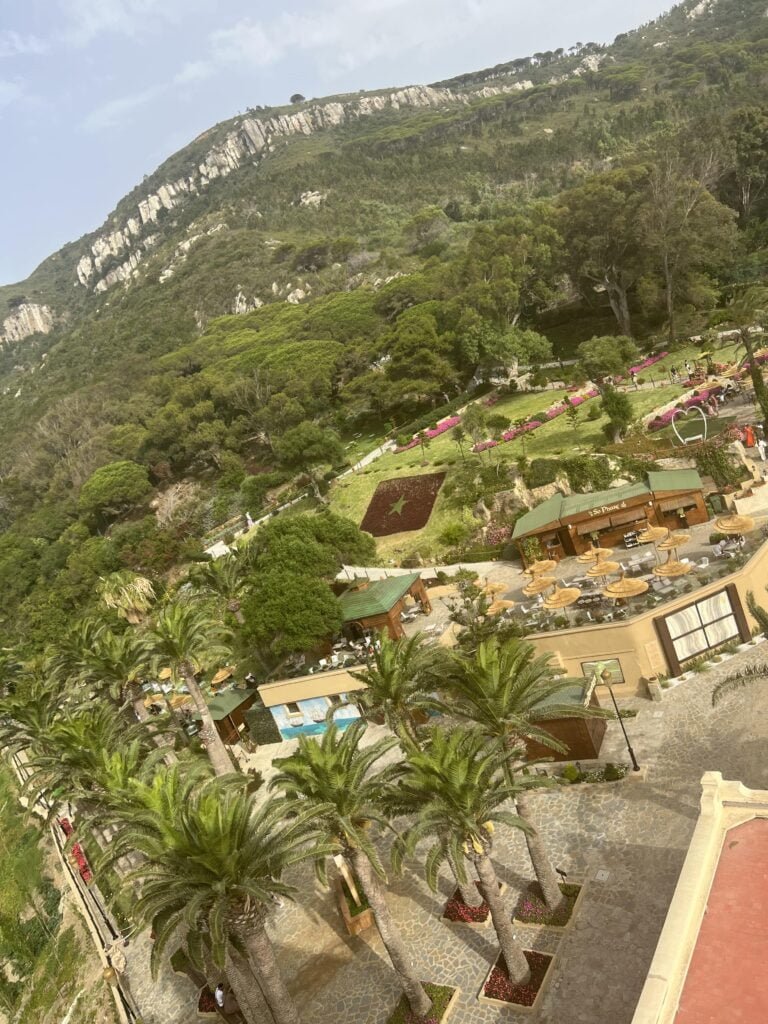Morocco : Cap Spartel lighthouse, jewel of the North African coast
The Cap Spartel lighthouse near Tangier is not just a great Instagram spot. The gateway to Africa through the Strait of Gibraltar, it also marks the point where the Mediterranean meets the Atlantic, and three continents meet. Quite a symbol for Morocco.

By Mérième Alaoui
Opened to the public only in 2021, the Cap Spartel lighthouse, one of the largest on the continent, is a worthwhile tourist attraction. Located on the cape of the same name, some 14 kilometers west of Tangier, it is one of the most popular spots in the north of the kingdom. Just a 10-minute drive from the famous Caves of Hercules, the 24-metre-high lighthouse is built around a square tower of Moorish architecture that resembles a minaret. The buff-colored building, with red brick ornamentation, marks the entrance to the Strait of Gibraltar to the west, on the African coast.
Like all Moroccan buildings, all the rooms open onto a patio with a traditional fountain. Now an exhibition space, each room describes a stage in the life of the lighthouse, or a technical aspect that was a feat of the time, or the portraits of the various keepers who have lived there. It is also the museum of Moroccan lighthouses, retracing their various local histories and exhibiting the objects that characterize them.

A place where worlds meet
Other contemporary photographs adorn the walls of the staircase leading to the top of the lighthouse, where the lunette is located, overlooking the place where the waters mix. A breathtaking view.
International law recognizes the longitude of the Cap Spartel lighthouse (5° 55′ W) as the western limit of the Mediterranean Sea.
This crossroads of worlds offers a delightful tranquility. Surrounded by majestic gardens and resting areas, it is a haven of peace and meditation. One of Morocco’s jewels, the lighthouse has been featured on the 200 DH banknote since 2012.
At the end of the 19th century, Morocco and Spain agreed to organize maritime safety west of the Strait of Gibraltar, and the construction of this lighthouse was one of the priorities. The British, Americans and French were also interested in the project, which was seen as a key to the development of trade between the colonies and Europe. Need we remind of the strategic importance of the Strait of Gibraltar? It is the only passage between North America and North-West Europe on the one hand, and the Middle East and beyond to Asia on the other.

Of great international interest, control of the lighthouse has been entrusted to an international commission with a rotating annual presidency
The decision to build the lighthouse was taken in 1860, after the terrible sinking of the training frigate Dona Isabel, which claimed the lives of 250 young Brazilian naval cadets. Commissioned by Sultan Mohammed ben Abderrahman from the French engineer Léonce Reynaud, work began in 1861 by the Ponts et Chaussées department, assisted by a specialized Moroccan workforce.

The lighthouse, still in operation today, was maintained during the colonial period by a consortium of Western powers. Of great international interest, the control of the lighthouse was entrusted to an international commission with an annual rotating presidency. The year after its inauguration (1865), an agreement was signed between Morocco and 10 countries to cover the costs of operation and maintenance. Today, around 100,000 ships (freighters, bulk carriers, oil tankers, container ships) pass through the Strait of Gibraltar every year.
A great place to visit with the whole family, steeped in history, technological discoveries and geopolitical lessons. It’s only a few minutes from beautiful Tangier la Blanche.
To find out more, visit : https://pharcapspartel.com







